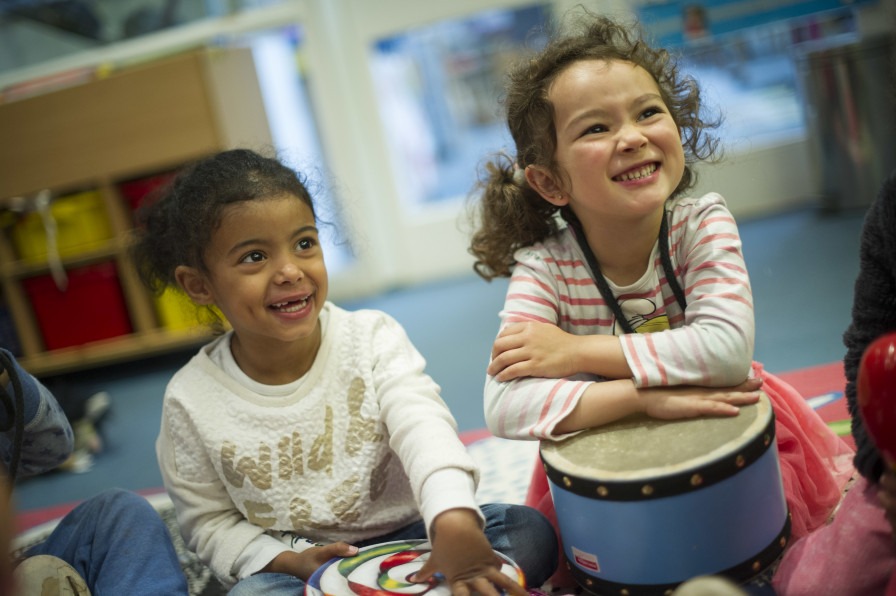Music and Speech & Language Therapy: From Shared Language to Shared Practice

At Creative Futures, as part of our Early Years project ‘Music for Change’ in north Westminster, we’ve been lucky to work with NHS Speech & Language Therapists (SLT) from Central London Community Healthcare. The collaboration is taking place in nurseries, as part of the SLTs’ role to support Early Years Professionals in the identification and nurturing of children with emerging or low-lying speech & language delay.
Inter-disciplinary co-delivery can be a tricky model to adopt: there can be challenges and sensitivities and different ways of working – as with any new partnership. But what struck us all immediately, from our very first planning discussion, was the huge amount of shared language across the SLT and music sectors. Our SLTs used Phase 1 of ‘Letters and Sounds’, which outlines an initial focus on developing children’s speaking and listening skills and is absolutely full of musical language – so much so that it reads more like a music project outline than a phonics one! Here are just a few examples: “Tuning in to sounds; listening and remembering sounds; going on a listening walk; drumming on different items; develop children’s awareness of sounds made by various instruments; sounds and rhythms; rhythm and rhyme in speech; distinguishing between different vocal sounds” – and so on.
Because we built in lots of planning time before the co-delivered project started, and then immediately before and after each hour-long workshop, we are able to explore and discuss in detail our different approaches, and how to combine them. All the shared language and common goals did not necessarily mean we were always coming from the same angle. We had some really interesting debates, for example, about the hierarchy of pitch and rhythm as tools for early language development (insofar as they can be separated in real-life music-making!).
The resulting collaboration has, to date, been really positive in multiple ways. Children have benefitted (in some cases we saw a really significant shift in language skill over a short period), nursery staff have adopted new techniques and ideas which are becoming embedded in their teaching, our music leaders and the SLTs have reflected on and adapted their practice, and as an organisation we are now re-shaping the content and delivery model for ‘Music for Change’ next year to draw on what we have learned and to reflect the particular focus on school readiness and speech & language development which were the cornerstones of the project’s needs analysis. Importantly, the focus on speech & language hasn’t limited how we’ve made music with the children. We found one common misconception was that a music and speech & language collaboration might mean just lots of songs and a focus on vocabulary. Yes, we did lots of singing, and we did think about target language, but we also explored language and communication through movement, improvisation, playing instruments, and child-initiated play.
To find out more about what we actually did and what we achieved, you will have to wait a few more months! More detailed reports are in preparation – we have engaged Professor Graham F Welch at the UCL Institute of Education to conduct an action-research evaluation of the collaboration. I can give you a brief preview of his findings:
A comparison of the observation notes between the earlier session and the final session revealed that the children demonstrated significant musical learning and language and communication development. The school staff in the participant classes had clearly been empowered to lead musical activities that also fostered social communication and language skills. The teachers (and children) also evidenced increased knowledge, skills and understanding.
The full findings from this initial phase will be released in August. To get your copy, stay tuned on the Creative Futures website or sign up to our newsletter.
‘Music for Change’ is part-funded by Youth Music, along with further funding from John Lyon’s Charity, the Trusthouse Charitable Trust and with investment from A New Direction’s Cultural Education Challenge programme.
© Julian Knight
June 2016
